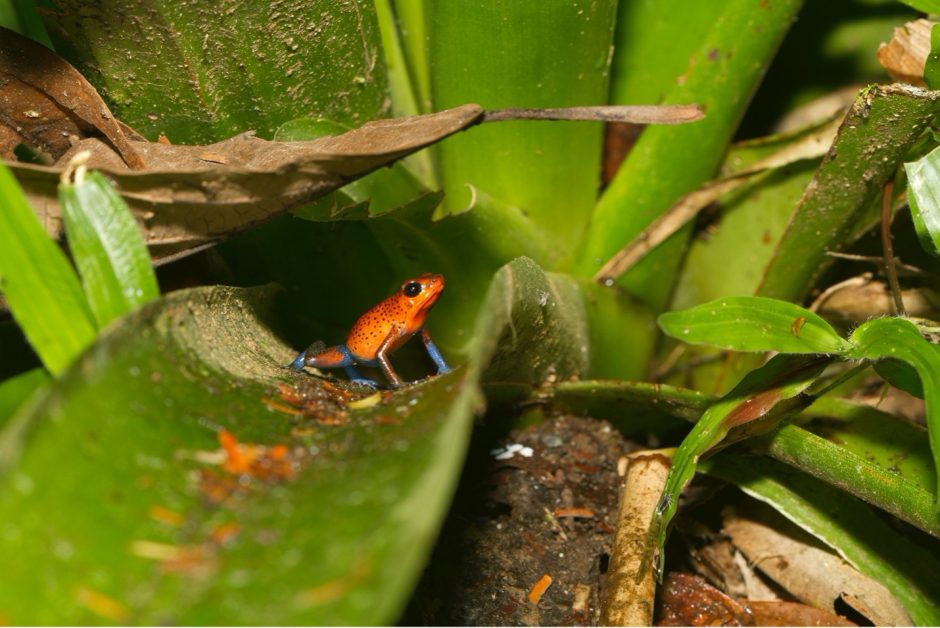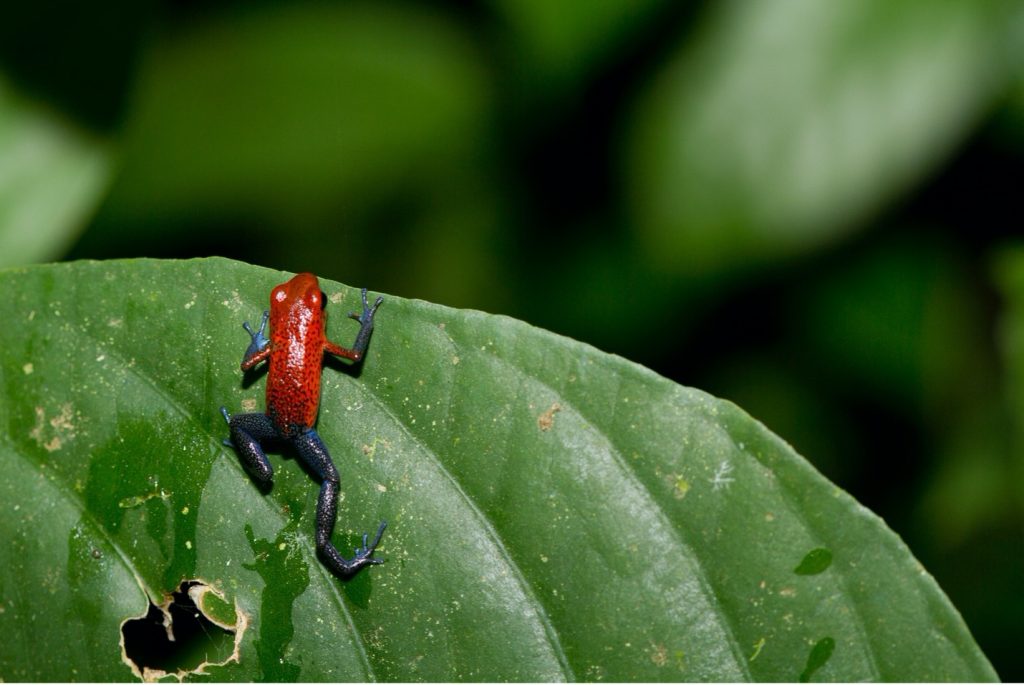
How to Get This Shot – Poison Arrow Frog in Bromeliad
Small things can make big impacts in the world of photography. These little jewels of the rain forest are some of my personal favorite subjects. But to capture them in all their tiny glory, you need to make sure you’re in the right place, at the right time, and equipped with the right technique.
- The first step is of course getting yourself in the right place at the right time. Costa Rica is a haven for these little beauties and two species are commonly seen on itineraries like this one, which visits the Atlantic lowland rain forests of Costa Rica.
- Once you’re in location, you’ll need to know when and where to see them. While they can be found year-round in these humid forests, and can be seen both day and night, I find that late evening hikes can be the most rewarding, paying particular attention to bromeliads and other plants that accumulate water and create the even more humid microenvironments these amphibians love. Going with a guided tour of Costa Rica can be very helpful, as local guides know exactly how to find these thumb-sized denizens of the jungle.
- So, you’ve found one of these amazing little frogs…let’s talk about camera settings. I’m a big fan of employing with classic macro photography techniques, which involves big depths of field and yields highly textured, popping shots. Because these animals are usually in very dimly lit conditions, it creates some major challenges to attempt big f/numbers. Thus, I do try and bring a flashlight or small flash to help. My go-to settings are 1/200th of a second, f/11 or f/16 and ISO 400 or 800.
- Please note, you should be very careful not to use excessive bright light for multiple exposures. Usually after 2 or 3 photos, I move on so that I can protect their sensitive eyes. If you do have a small tripod, it can be extremely helpful in low light conditions, as these frogs do stay quite still, enabling minimal artificial lighting (a headlamp) and maximum depth of field.
- You should experiment with alternative depths of field, too. Oftentimes I will try and photograph at f/4 or f/5.6, which allows significantly more light in, and also helps create some blur in the foreground or background, resulting in a pleasing look. For these shallow depths of field, I try and scoot back a little and put the frog only in a small fraction of my overall frame—like I did here in this example—so that the entire frog is in focus, even at shallow depths of field.
- We don’t often have the luxury of choosing our background and exact composition with these frogs, as they do what they want and sit where they want. Thus, you have to make the most of what you are given. I look to use leading lines in my composition, which is fairly easy to do with the dominant shapes and textures of bromeliads.
- I also am quite patient and wait for interesting moments and postures of these frogs. They usually will move slightly over the course of a few minutes, and waiting for a new pose can result in a rather different image altogether.

- I also will pay particular attention to shadows, as they help create a sense of intrigue. You don’t have many options to experiment with your settings, as macro shots are relatively standard with f/16, 1/200, and ISO 400 or 800. Thus, my experimentation really comes down to different scenes and locations of these ornate subjects.

And there you have it—a few tips on photographing one of my favorite rain forest dwellers in Costa Rica.
If you have photographed these amazing amphibians and have additional thoughts and perspective, please do share in the comments below!
Cheers,

Court
Leave a reply